You can get your thighs stronger and healthier with this dumbbell leg HIIT workout. Additionally, you’ll burn the most calories possible to help reduce your body’s fat stores. See the video lower within this article to understand how each exercise can be executed with proper form.
Compound Leg Movements: The Secret to Building Strength and Toning Your Body
Your leg muscles are the largest group of muscle fibers in your body.
Think of your leg muscles like a furnace. They burn calories.
The stronger your legs, the higher your basal metabolic rate (the number of calories your body burns while at rest).
It’s essential to train your thighs and booty often. The advantage of this particular high-intensity interval workout (HIIT) is that it also burns up fat cells for energy because it combines strength training and cardiovascular cross-training into one highly effective exercise session.
Maximize Your Leg HIIT Workout with These Easy Tips
This high-intensity interval workout is for both women and men and can be modified to match your unique fitness level.
If you want to make these HIIT exercises more challenging:
- hold a pair of dumbbells;
- do more repetitions of each exercise (up to 16 reps);
- take a shorter break between circuits (1 or 2 minutes – and use a timer on your phone to ensure you’re not resting too much.)
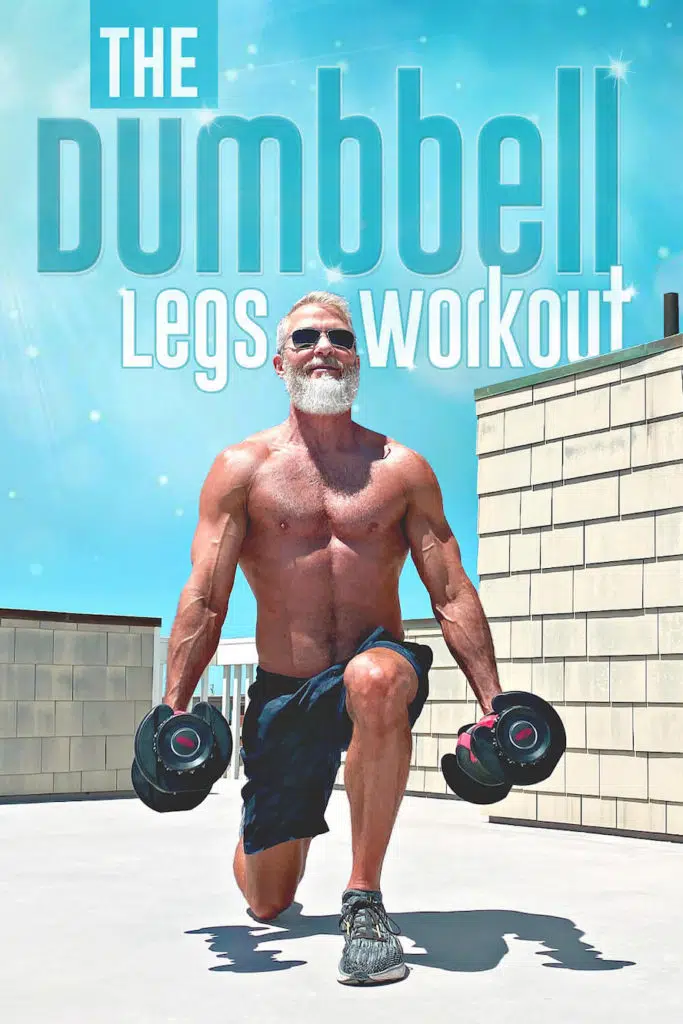
To make the HIIT exercises easier:
- just use your body weight (no handheld weights);
- do fewer repetitions of each exercise (6 to 10 reps);
- take a longer break between circuits (3 minutes).
I encourage you to consult with your medical doctor before making significant changes to your nutritional habits and movement patterns.
While exercising your leg muscles, avoid sharp pains – particularly in your knee joints and lower back.
You can always modify an exercise to accommodate a previous injury or simply skip an exercise altogether. Safety first.
Certain primal, highly functional movements stimulate a response throughout the entire body.
Squats, lunges, and deadlifts target your leg muscles; however, all the muscles in your body can respond positively to these exercises.
How Leg Muscles Can Help You Burn More Calories
The human body has evolved so that leg muscles are intended to be weight-bearing.
You can walk, run, jump, and balance all day on your legs – but you couldn’t do that on your arms.
Your booty and thighs have a higher number and density of muscle fibers than your torso, so training your leg muscles demands more effort and fuel.
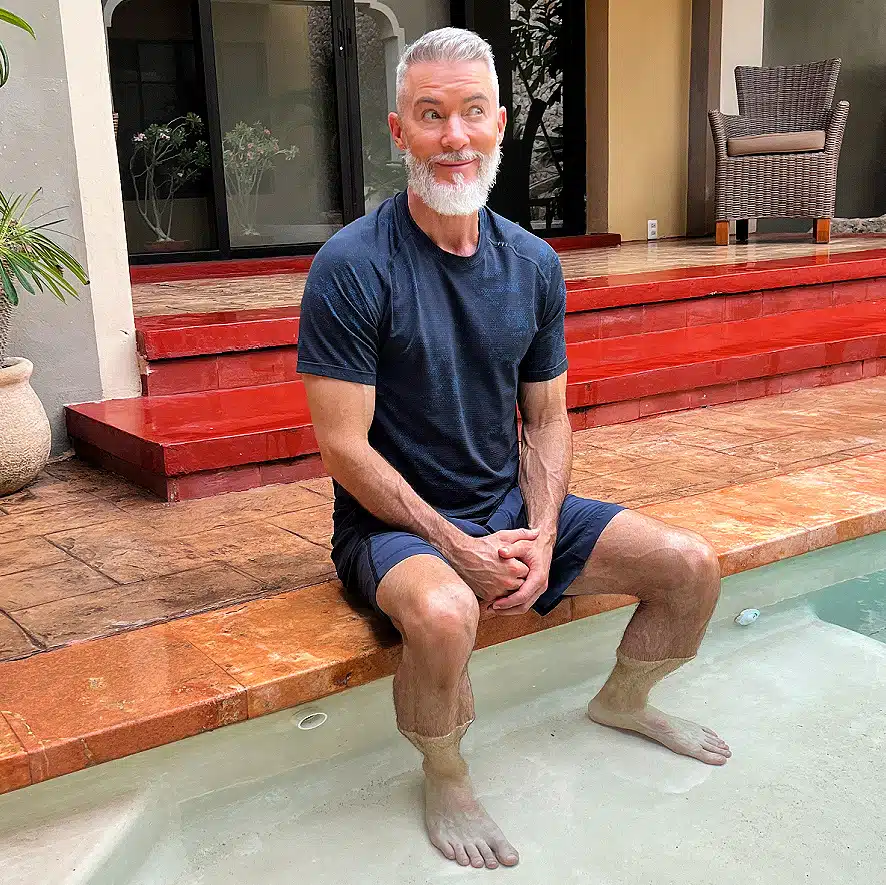
Your body responds to intense thighs-and-booty training by stimulating the endocrine system and raising metabolism to provide the required energy.
Squatting, lunging, and deadlifting end up building the chest and back, as well as the leg muscles. They are compound movements. They use everything, including your core muscles – upper abdominals, lower abdominals, obliques, intercostals, serratus, erector spine, and the lower back.
Try This Dumbbell Leg HIIT Workout for Powerful Thighs
This workout is a lot of fun – and it produces positive results in your physique. You can hold dumbbells to further firm and chisel your leg muscles.
Each circuit has several exercises or “intervals.”
- These exercises are done consecutively, without rest, until you reach the end of a circuit.
- Once you’ve completed a circuit, you rest, then repeat the entire circuit.
- After completing a circuit 3 times, you move on to a new circuit containing entirely new exercises.
You’ll need that time between circuits to catch your breath and prepare mentally for the next round.
Good form is essential.
Poor form produces injury, but excellent form ensures leg muscles are getting the most benefit from each movement.
To help prime your body for strenuous exercise, you might want to try a warm-up routine first.
Leg HIIT Workout: First Circuit
- squat with a pulse finish
- jump squat for thighs and booty
- sumo with a pulse finish
Leg HIIT Workout: Second Circuit
- alternating plyometric lunge
- front squat with pulse finish
- good mornings
Leg HIIT Workout: Final Circuit
- reverse lunge
- deadlift
- back squat
- alternating heel raise and toe raise
Individual Exercise Descriptions for Leg HIIT Workout
Exercising your lower body’s muscle groups – quadriceps, hamstring, the booty (gluteus maximus), inner thigh (adductor), outer thigh (abductor), and calf – is an extremely important part of your entire strength-training regimen. Here is a description – including tips – and a photo for each interval within this leg HIIT workout.
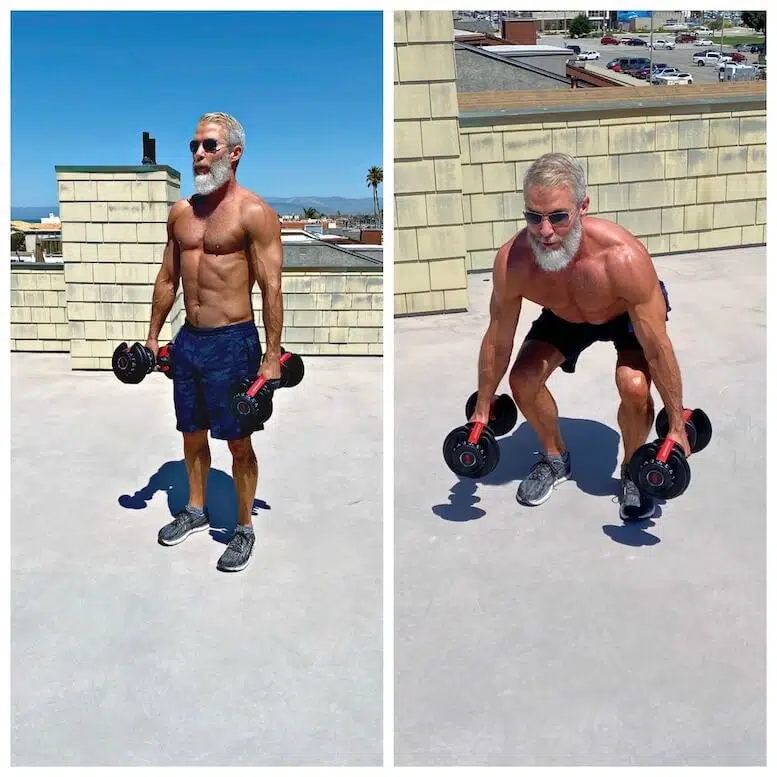
Squat with a Pulse Finish
Since this is the first exercise in the workout, it’s a good idea to warm up gradually. Use light dumbbells, or even just keep your hands on your hips without any dumbbells at all. The idea is to gradually lubricate your knees and raise the temperature in your hips.
The genius of ending an exercise with a pulse finish (see video below), is that you create time under tension in the leg muscles. Your body interprets this as an indication that leg muscles must be made stronger to accommodate this new way of moving.
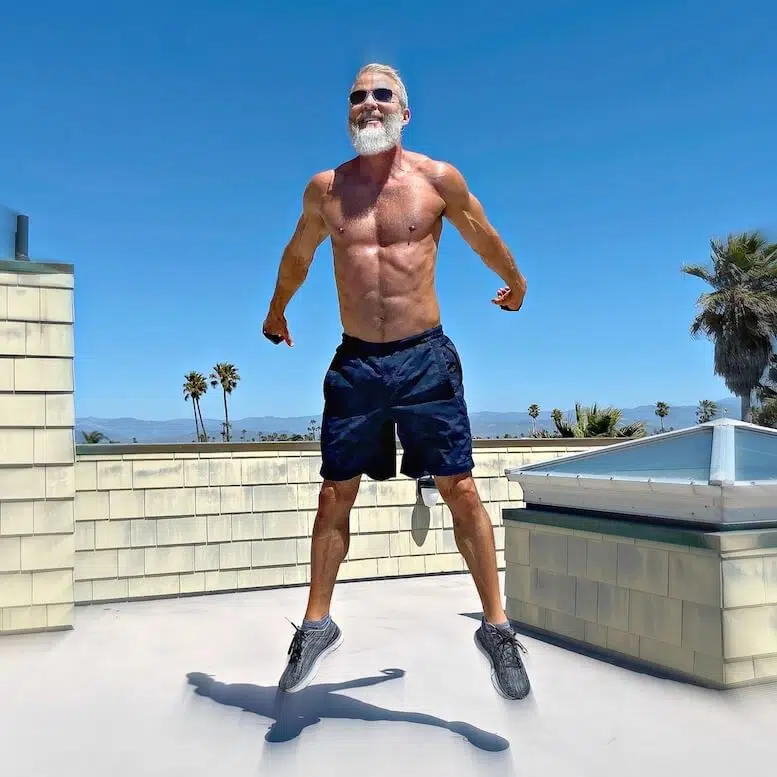
Jump Squat for Thighs and Booty
The higher you jump, the harder it is.
Imagine being light on your feet. It’s better for your feet and knees if you direct your energy upward toward the sky instead of dumping all of your body weight into your ankles as you land. You do this, in part, by pulling your navel in tightly and keeping your pelvis centered.
Sumo with Pulse Finish
A key point to doing the sumo exercise effectively is to turn your legs open from the hips (instead of just turning the feet out).
Torso alignment is crucial. Set your scapula (by bringing your shoulder blades together and down) and create lots of space between the top of your shoulders and your ear lobes. Keep your gaze directly forward.
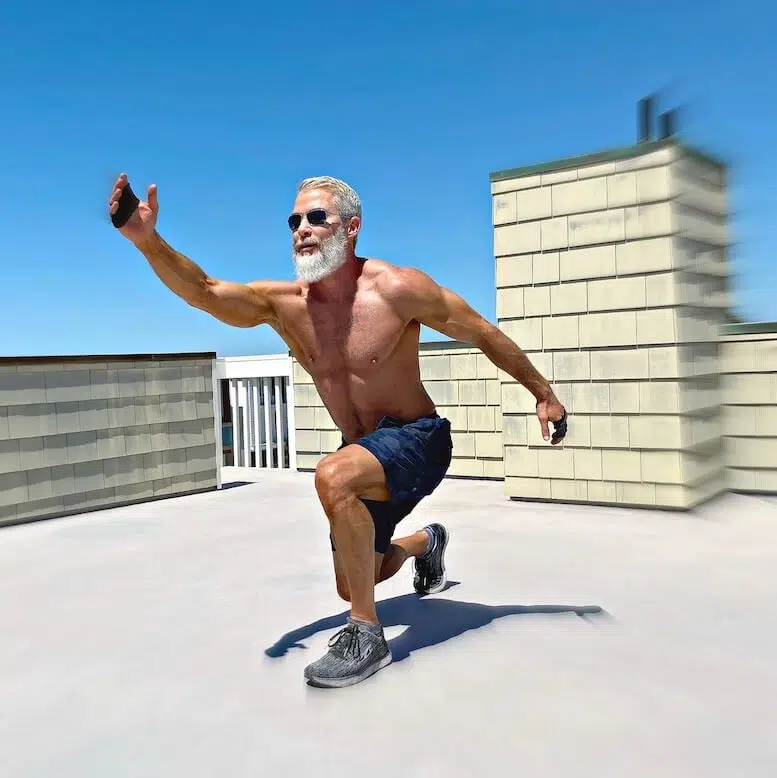
Alternating Plyometric Lunge
This will get your heart rate pumping and burn some serious calories. Plus, it really firms, rounds, lifts, and strengthens your booty muscles.
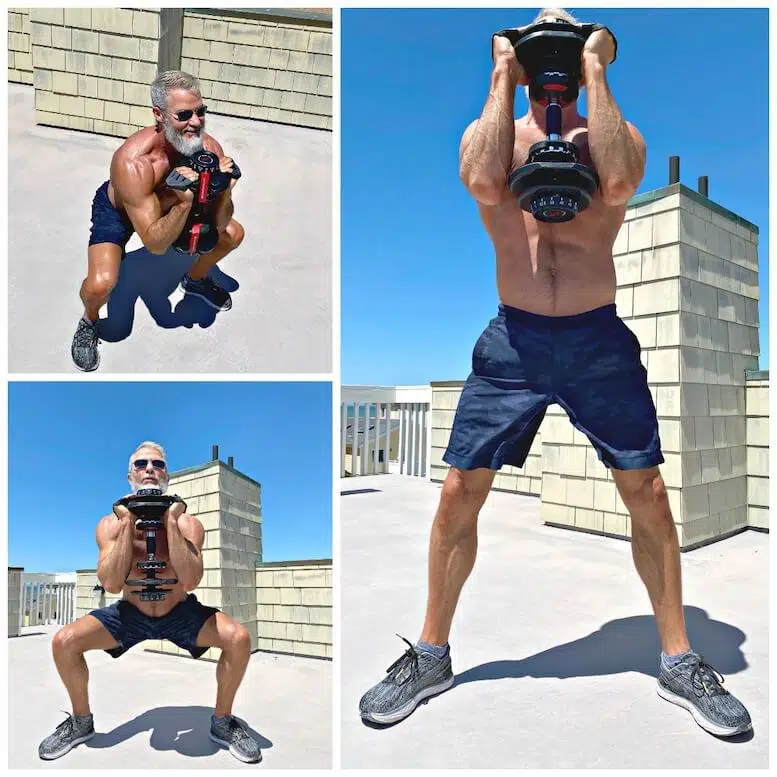
Front Squat with Pulse Finish
Front squats are among the most beneficial exercises for your leg muscles. Make the most of this one.
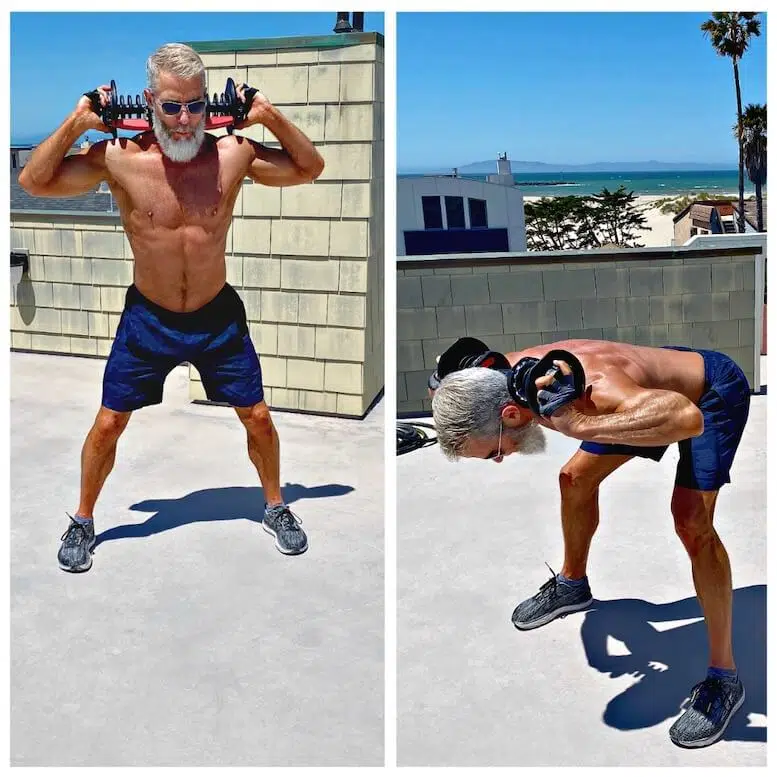
The Good-Mornings Exercise
If you’re new to the good morning exercise, use lighter dumbbells (or even no dumbbells – simply place your hands behind your head).
Please remember – while doing good mornings – to keep your lower abdominal muscles and booty muscles activated throughout the entire exercise.
Don’t let your abs go soft or relax your glutes even for a second. If you do, the lower vertebrae of your spine will have to absorb the weight your core muscles surrendered – and that can lead to injury.
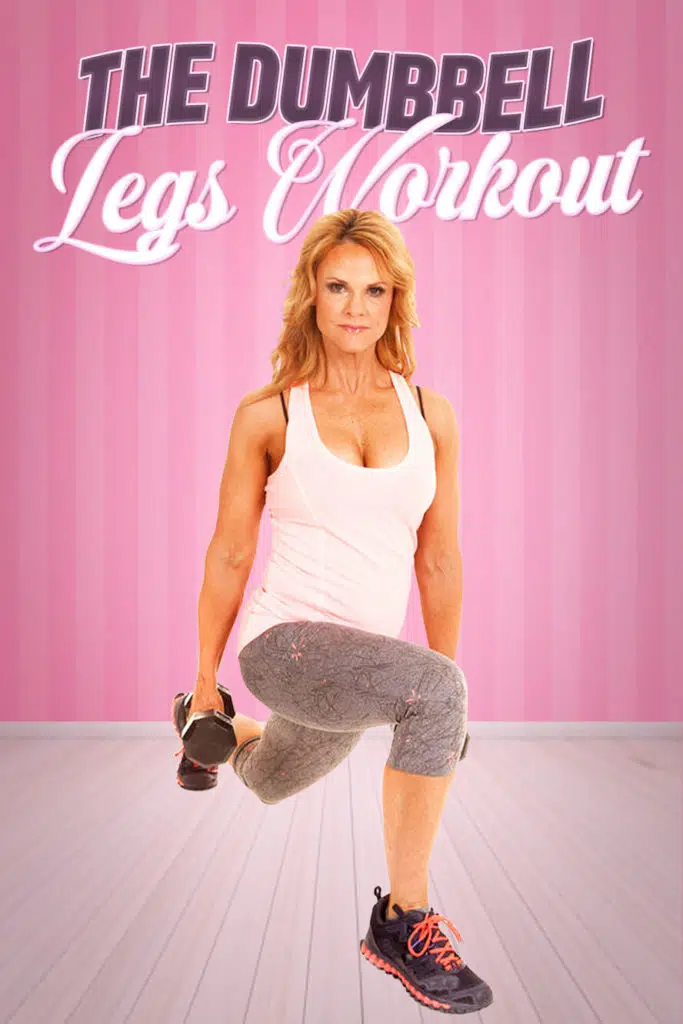
Reverse Lunges for the Booty
Reverse lunges are a fantastic exercise, in part because they keep body weight distributed toward the back – away from your front knee cap. This means you can really hit the booty and thighs without compromising your knee joint.
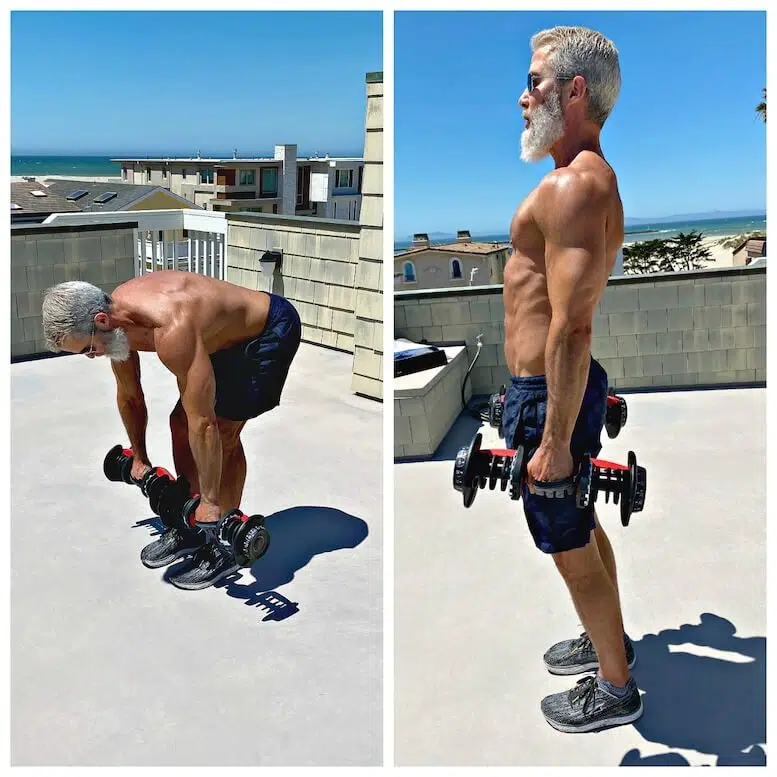
Deadlift with Dumbbells
With deadlifts, you want your weight to move back so that your knees are directly over your toes. (Unlike squats, where your knees can move in front of your toes a bit.)
It’s important how you position your feet during a deadlift. If you roll too much of your body weight along one side of the foot or the other, you are no longer grounded, and so your lower back has to try to pick up the slack and stabilize you. Instead, try to feel the entire sole of your foot making contact with the ground. This is your base of support.
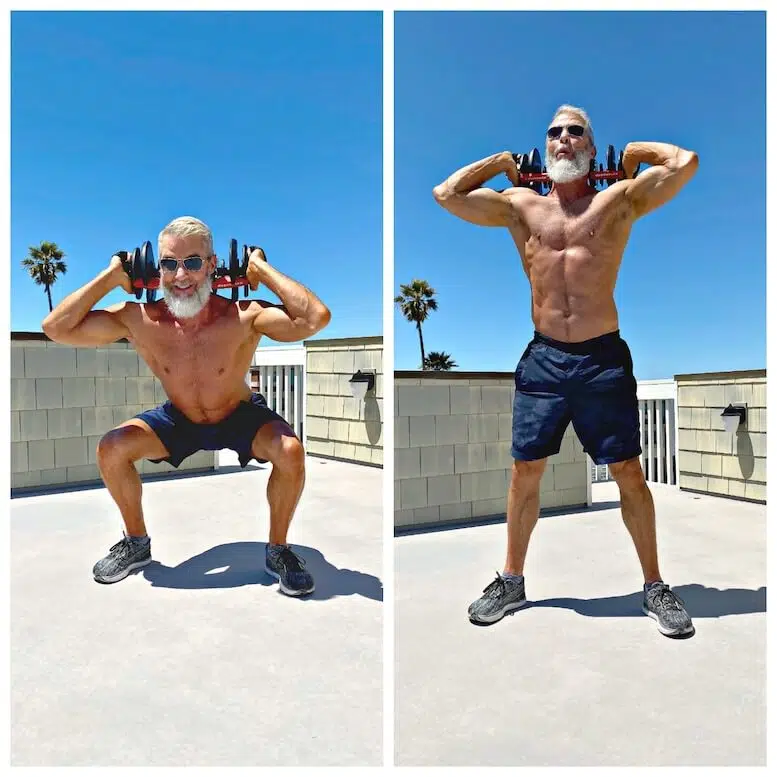
Back Squat for Thighs
It’s helpful to keep your top rib compressed while back squatting. This prevents an over-arch in the lower back.
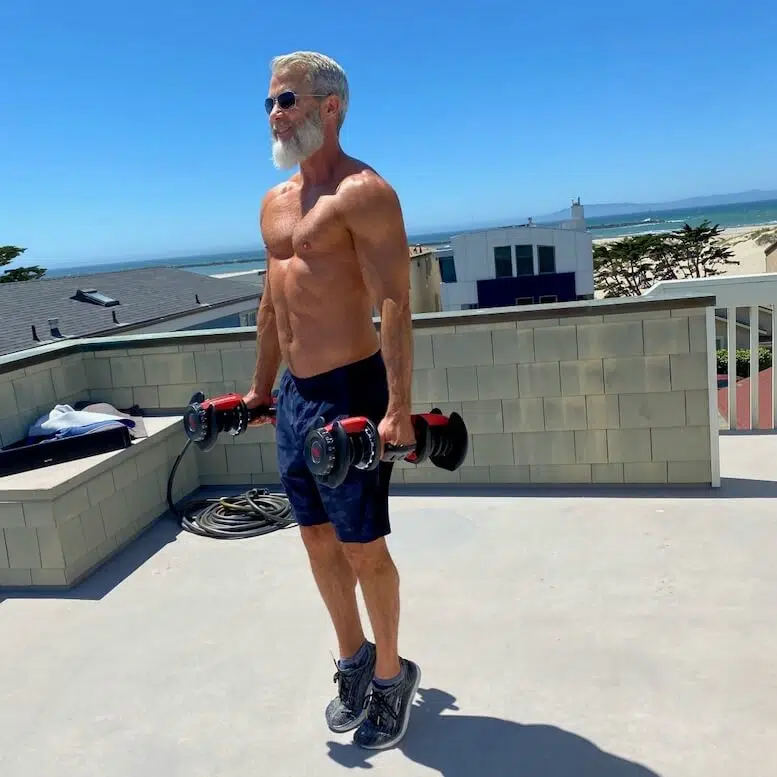
Alternating Heel Raise and Toe Raise with Dumbbells
This calf exercise looks easy in the video, but you’ll feel it – primarily if you concentrate on exaggerating the range of motion.
This particular lower-body workout is a companion to the dumbbell torso workout, which you might like to try later this week to round out your muscle groups.
Final Motivation for Your Leg HIIT Workout
It’s helpful to understand that there is research to support the efficacy of the movements described above.
Higher-intensity interval training improved metabolic syndrome and body composition in cardiac rehabilitation patients, according to a study in 2015 (Shin). The study established that a 12-week high-intensity interval training program significantly improved body composition and metabolic syndrome risk factors in patients with heart disease.
Additionally, the effects of high-intensity interval training (vs. moderate-intensity continuous training) on body composition in overweight and obese adults proved that high-intensity interval training resulted in greater reductions in body fat percentage and waist circumference (systematic review and meta-analysis by Keating, 2017).
Finally, the effects of high-intensity interval training on body composition, aerobic and anaerobic performance, and plasma lipids in overweight, sedentary women revealed that a 15-week high-intensity interval training program resulted in significant improvements in body composition, aerobic and anaerobic performance, and plasma lipid levels (Trapp, 2008).
Evidence indicates you are more likely to see visible results from these types of workouts.
This article emphasizes the importance of strong and healthy legs to burn calories and reduce body fat stores:
- It provides a high-intensity interval workout for both men and women that can be modified according to individual fitness levels.
- The workout includes exercises that target leg muscles while stimulating the endocrine system and raising metabolism to provide the required energy.
- Compound movements such as squats, lunges, and deadlifts not only build leg muscles but also activate the core and back muscles.
Safety precautions are recommended, and good form is essential to ensure optimal benefits from each movement.
